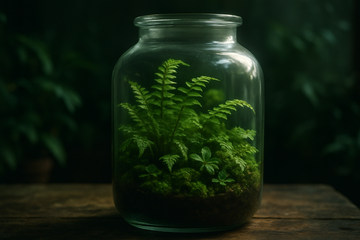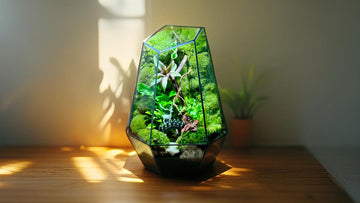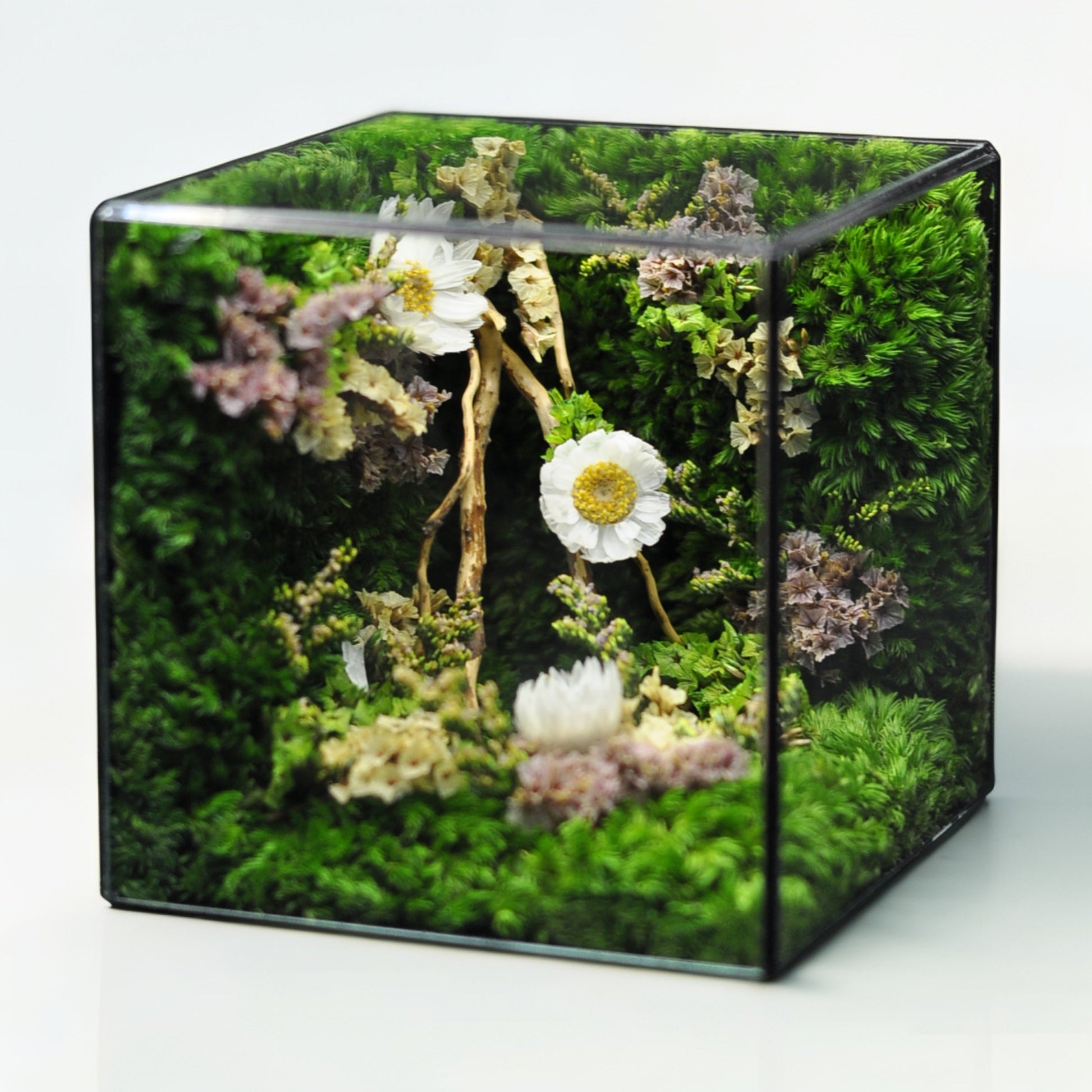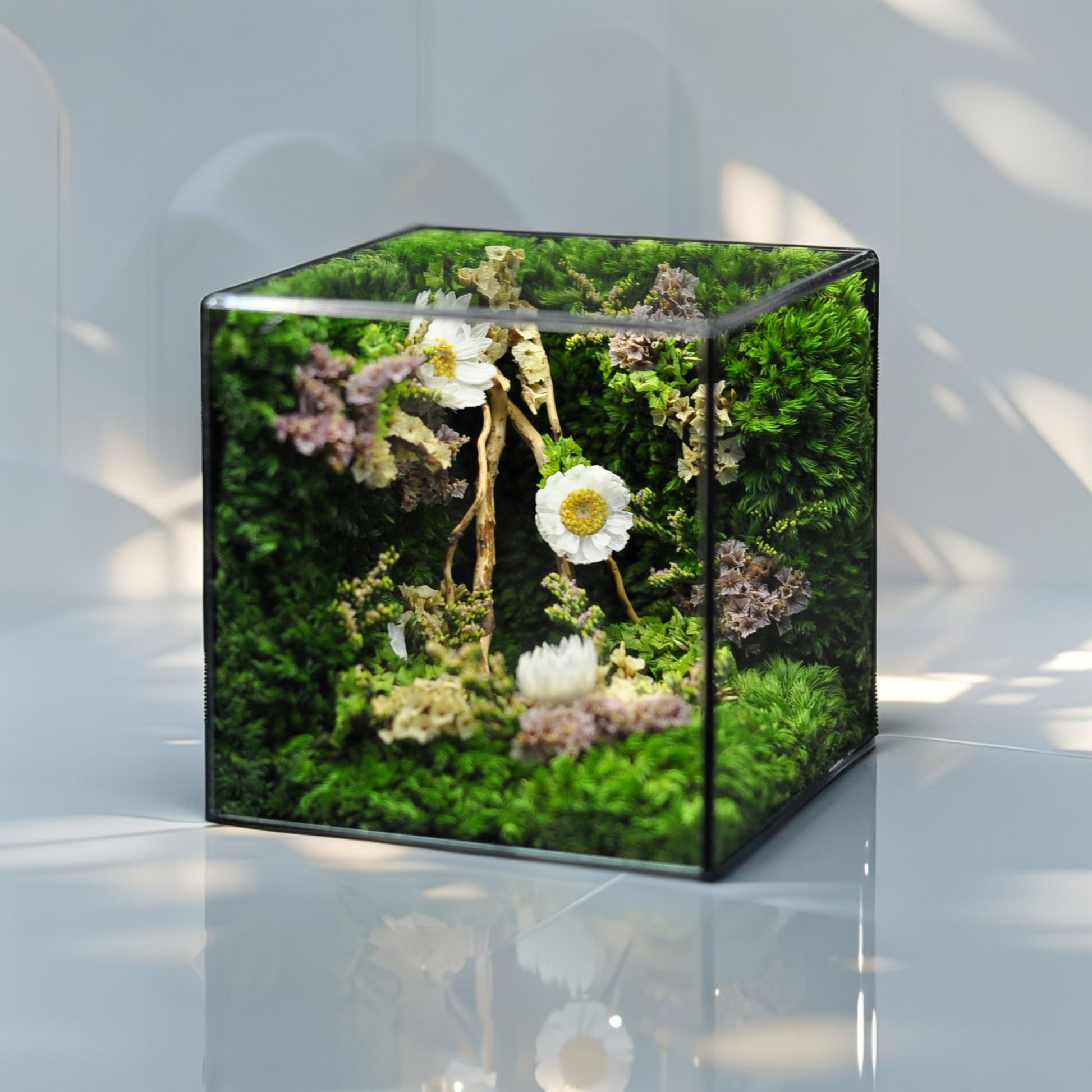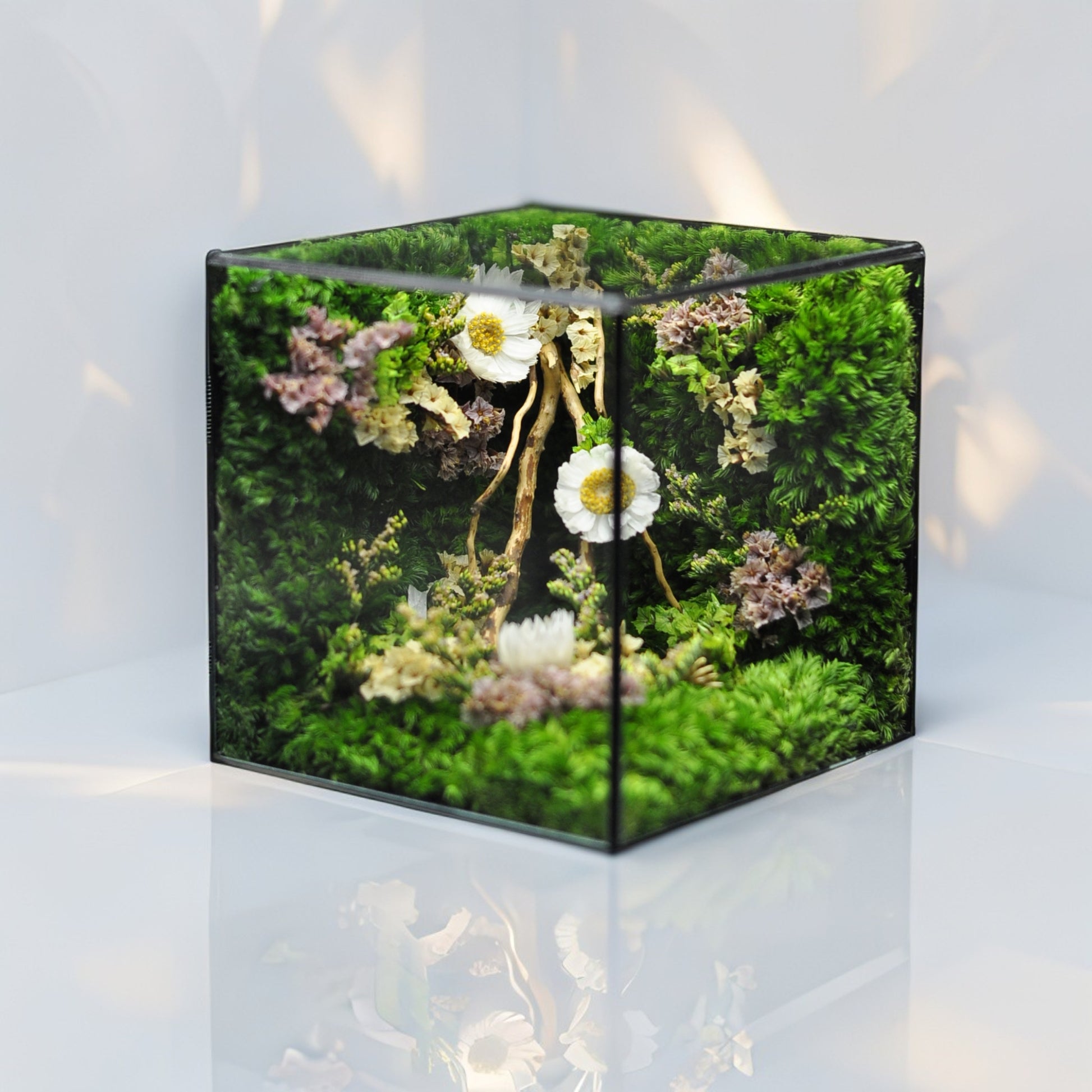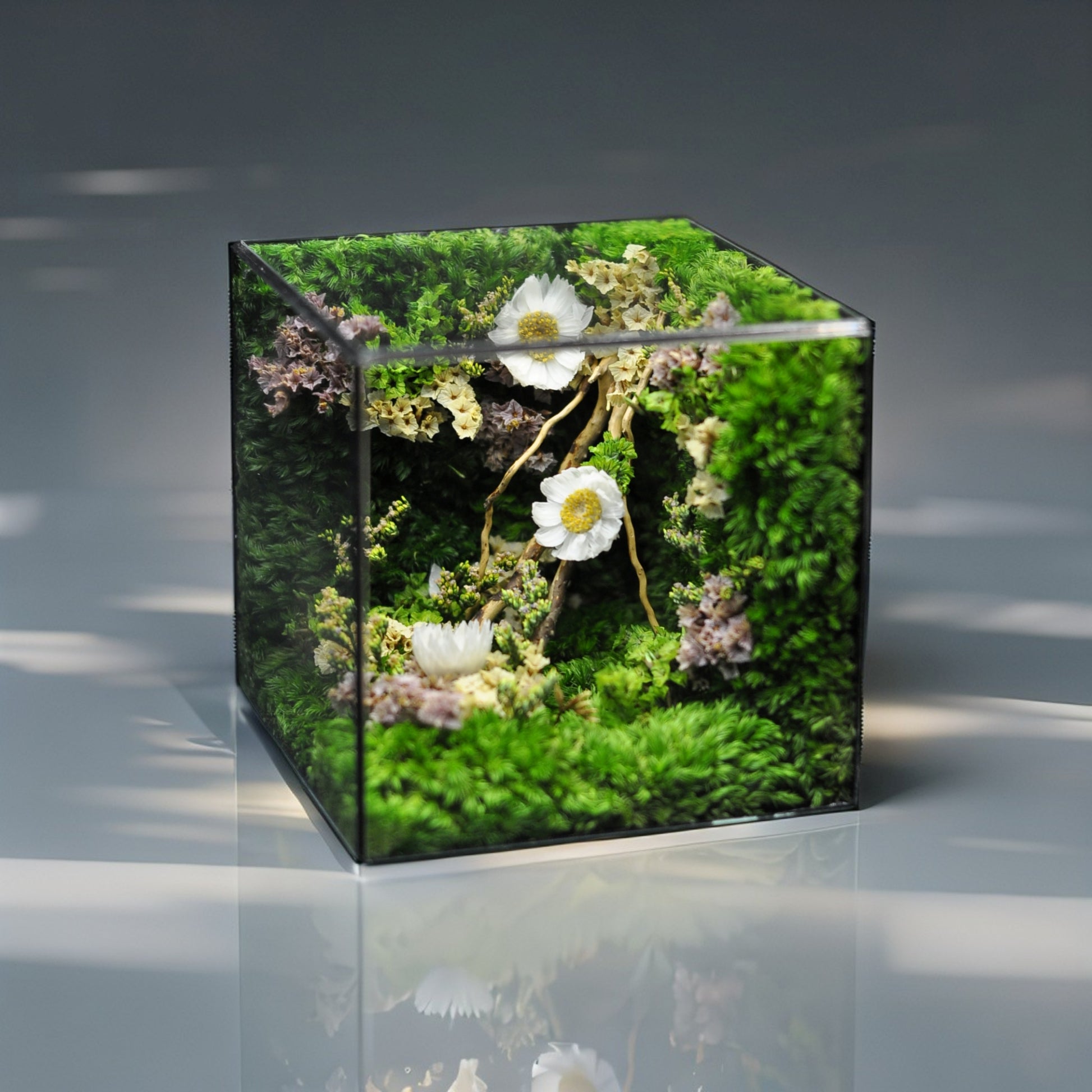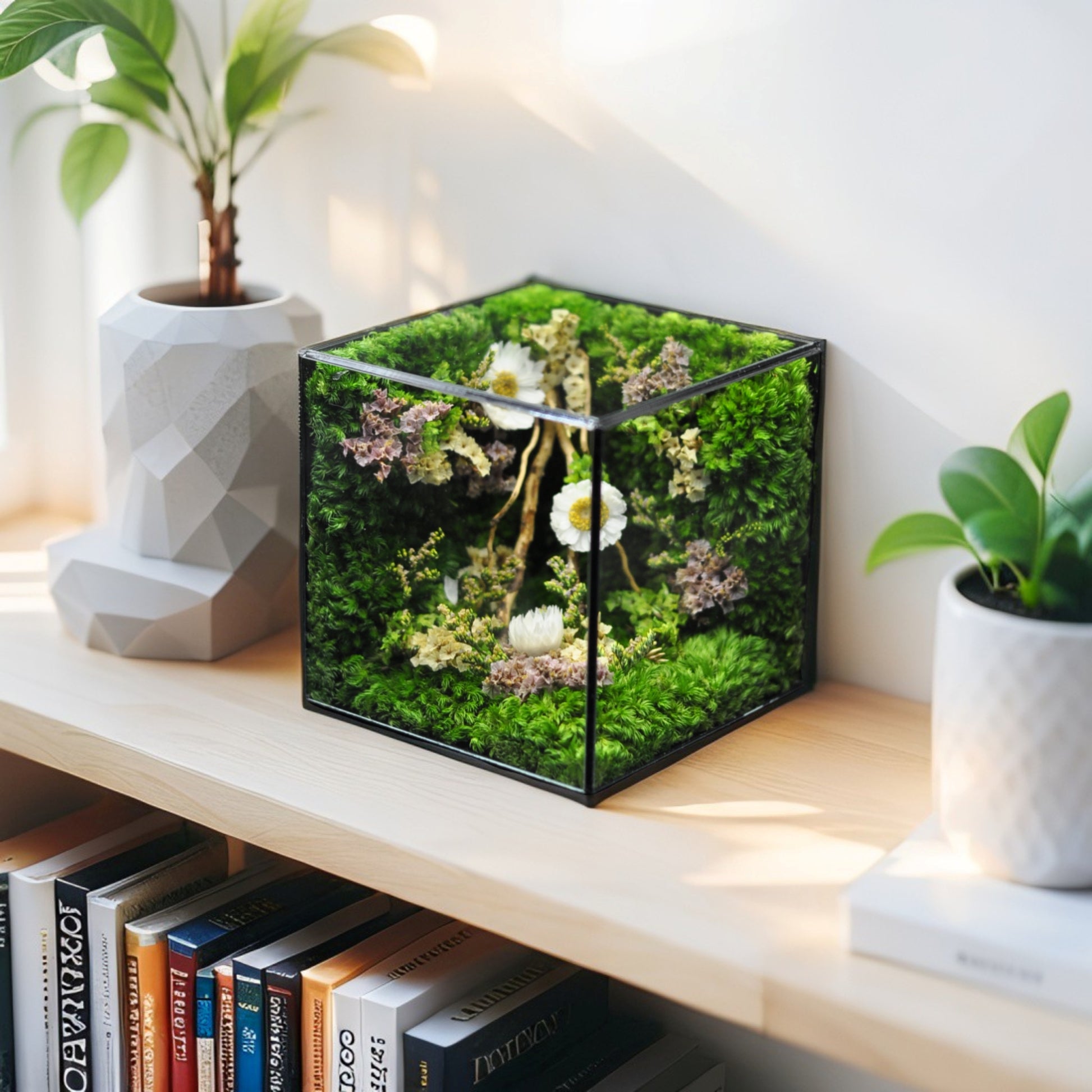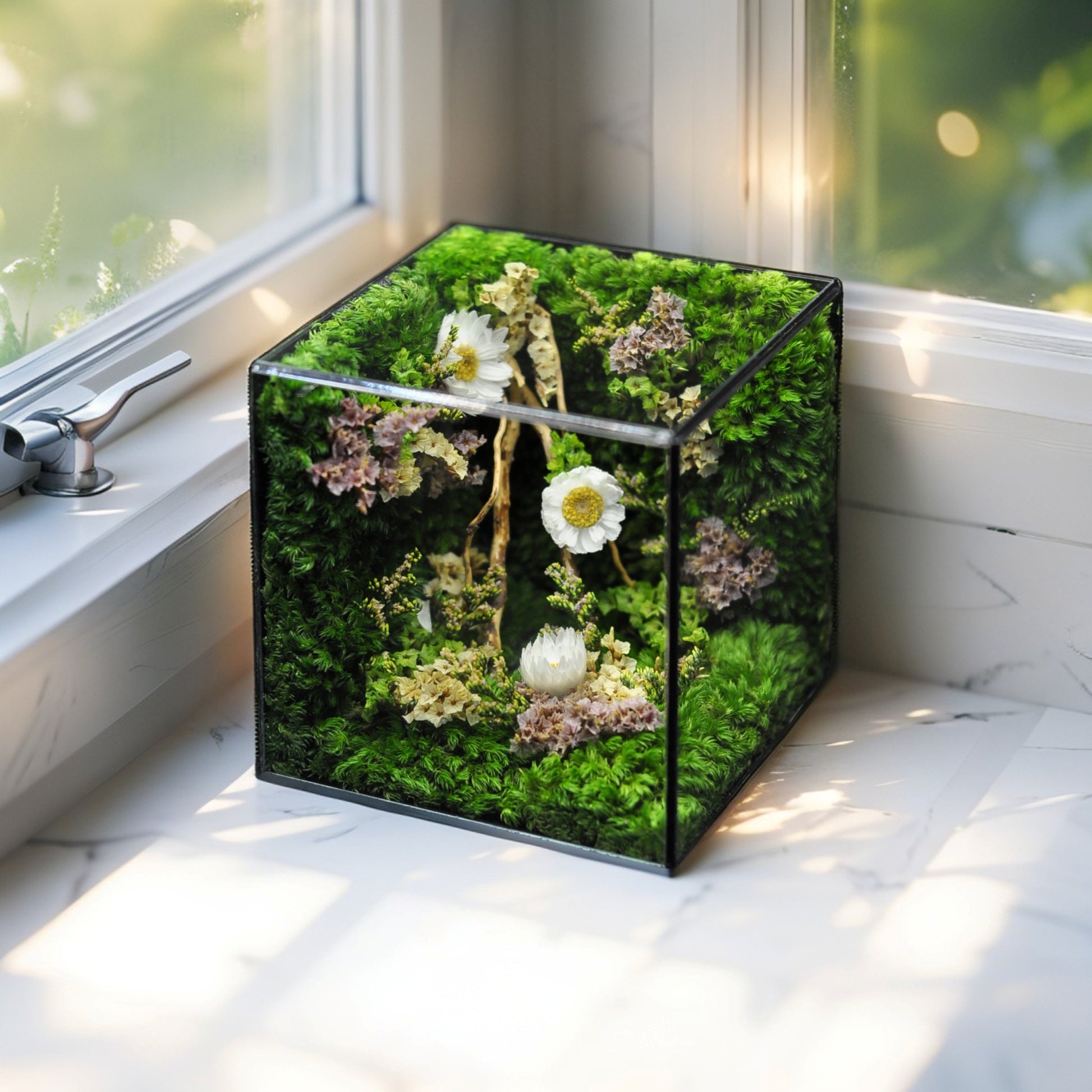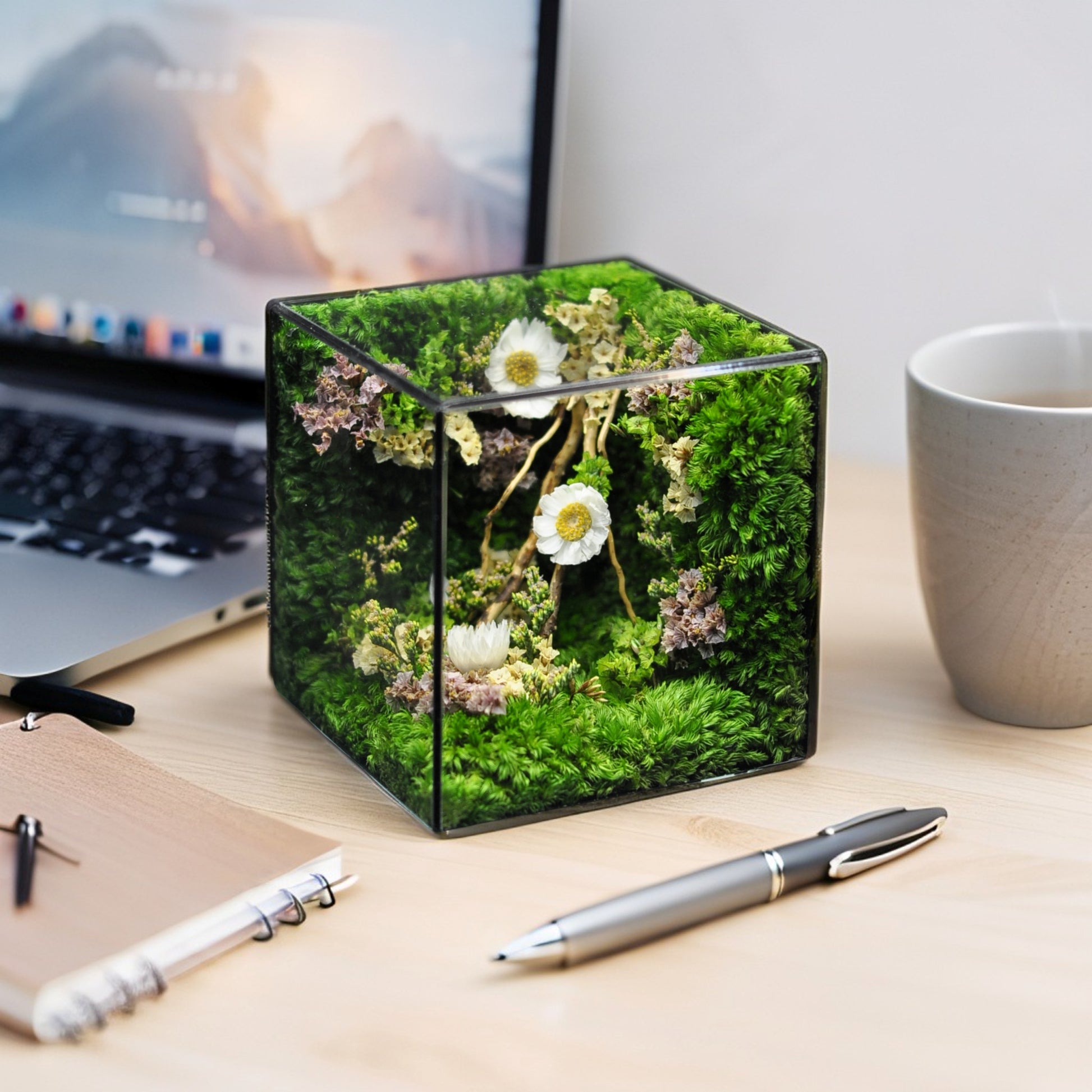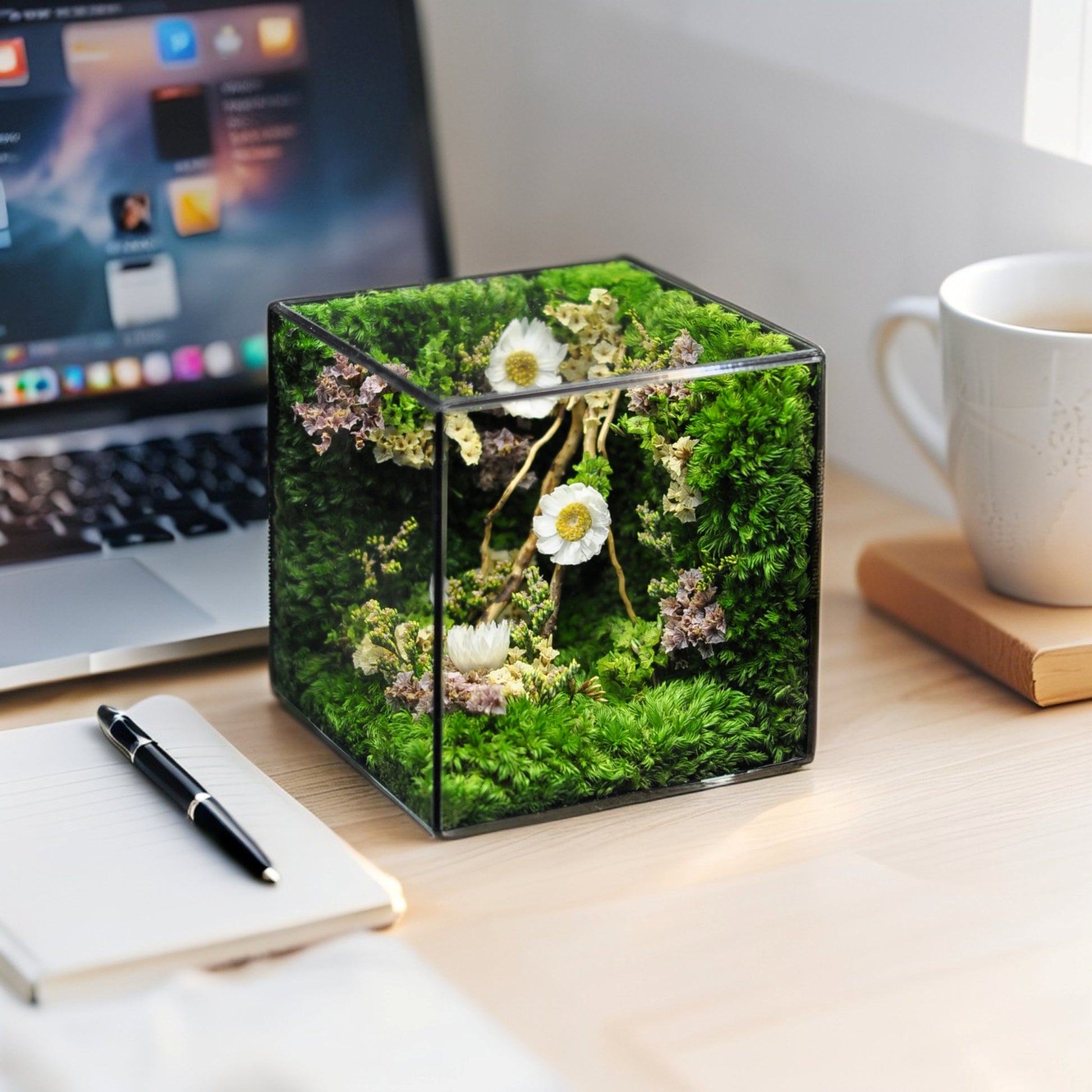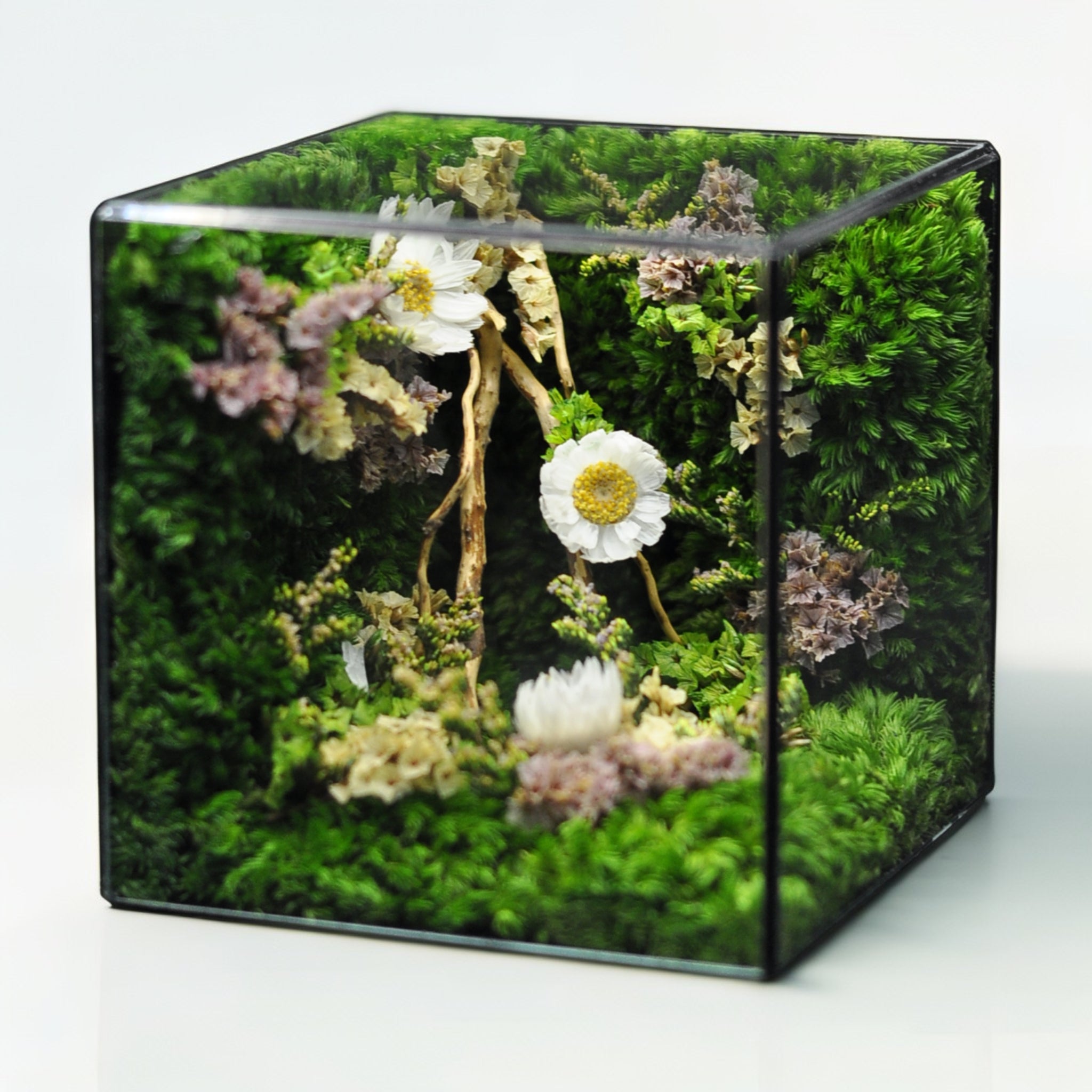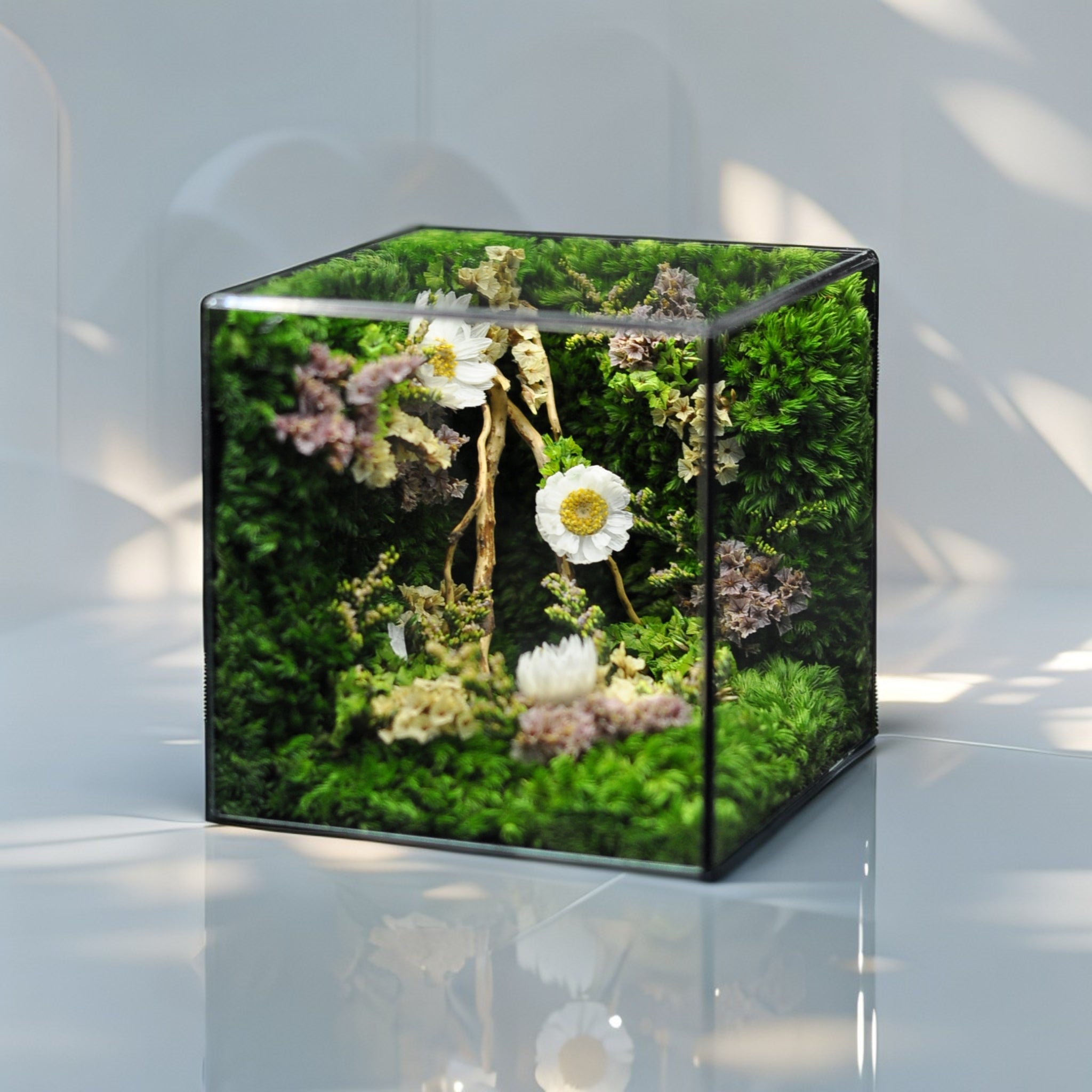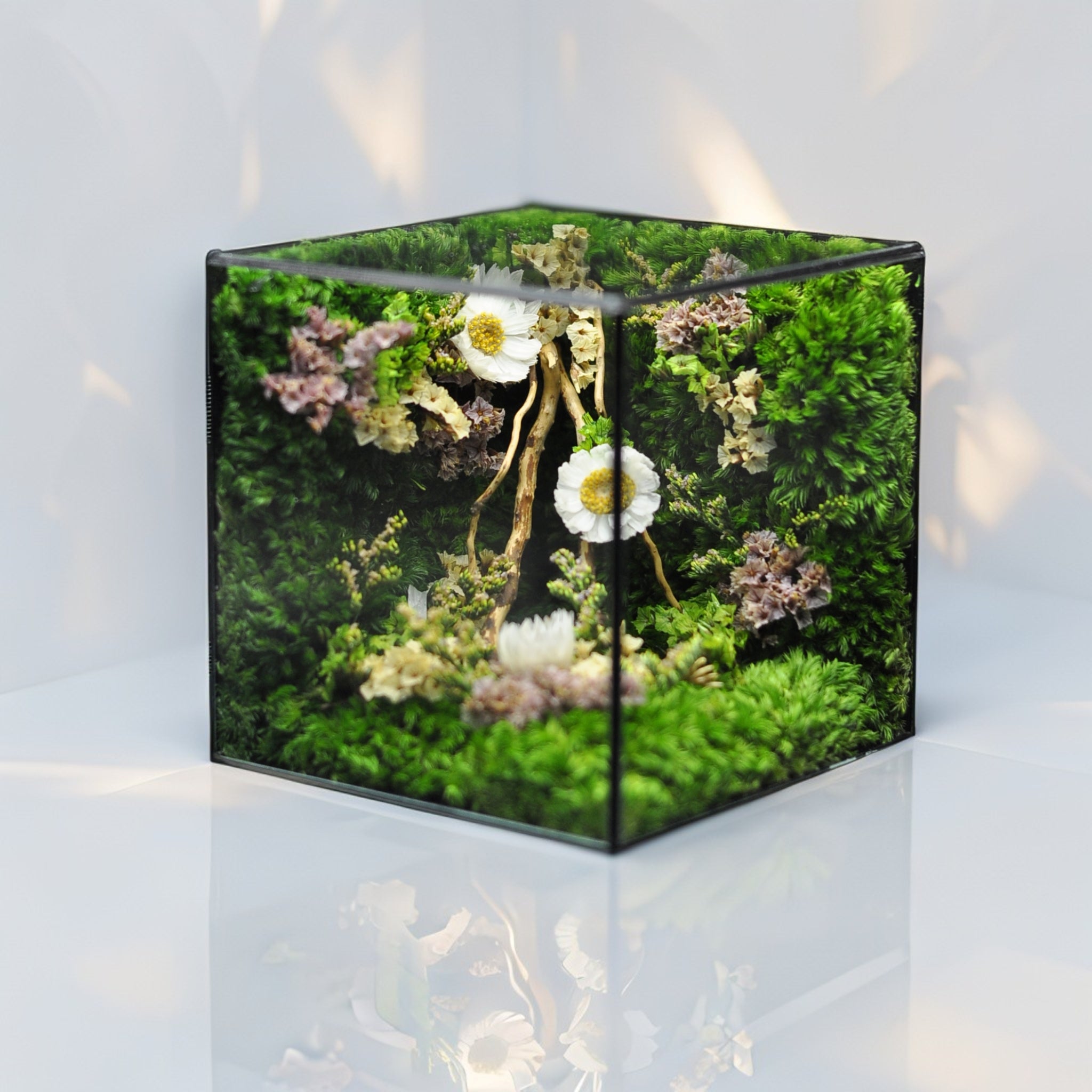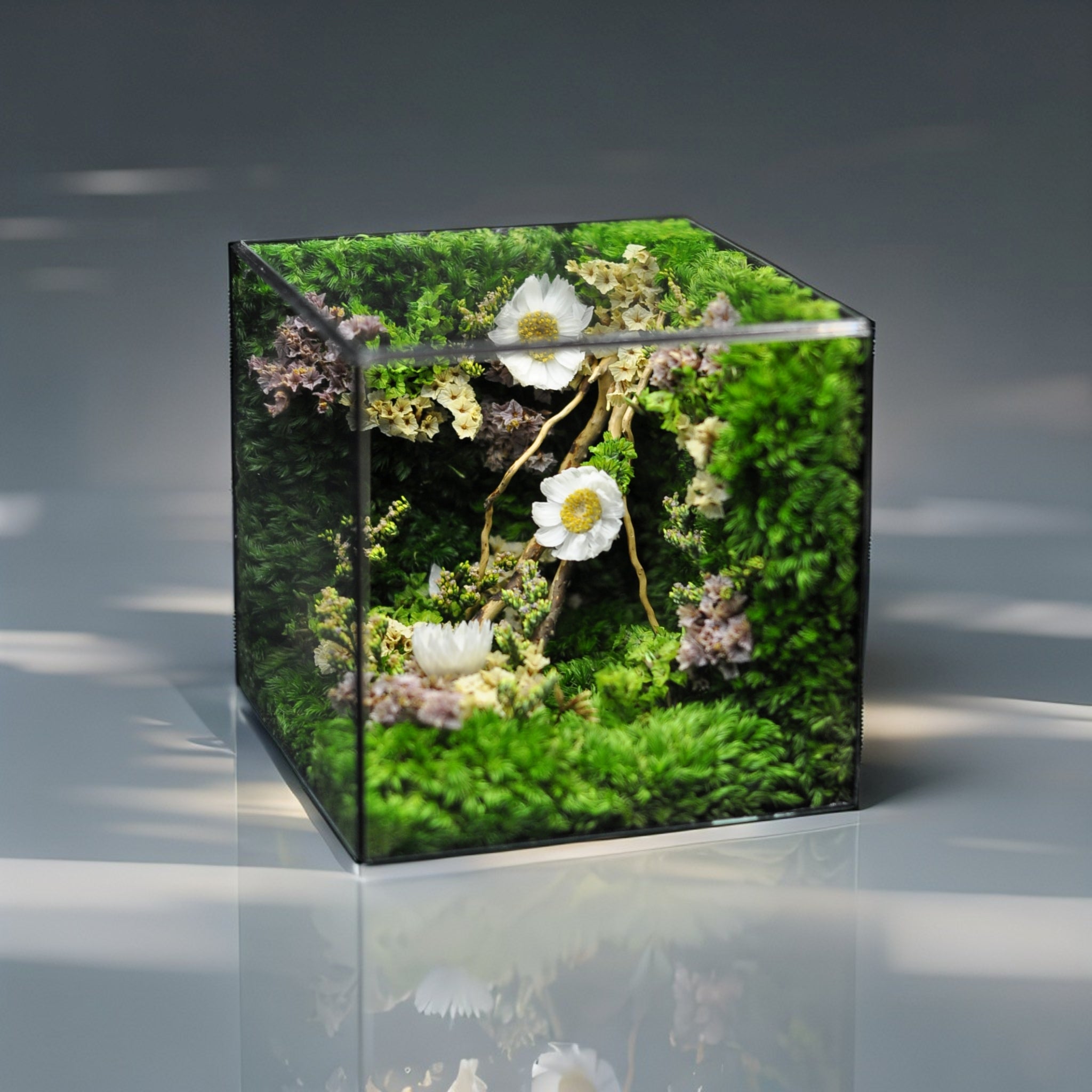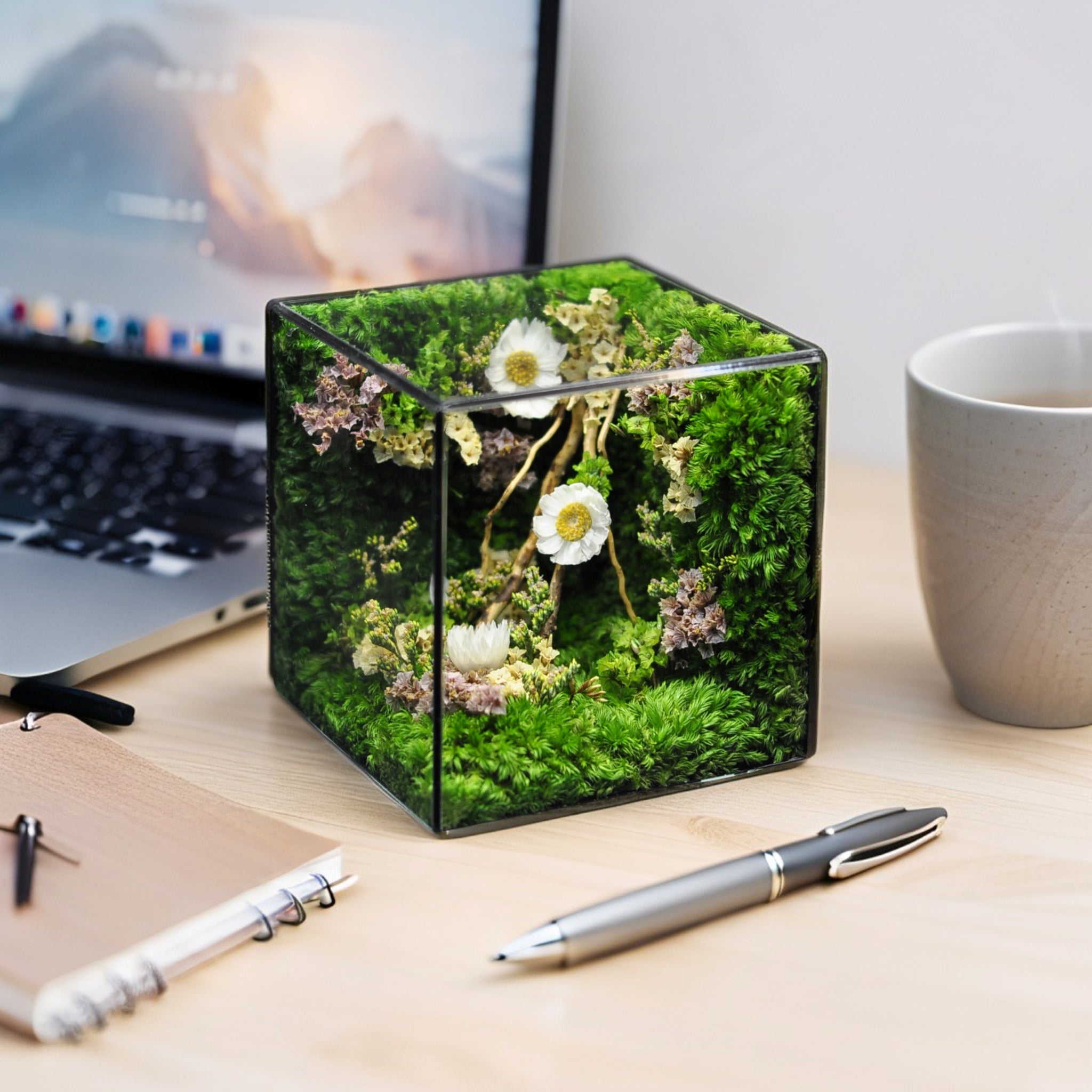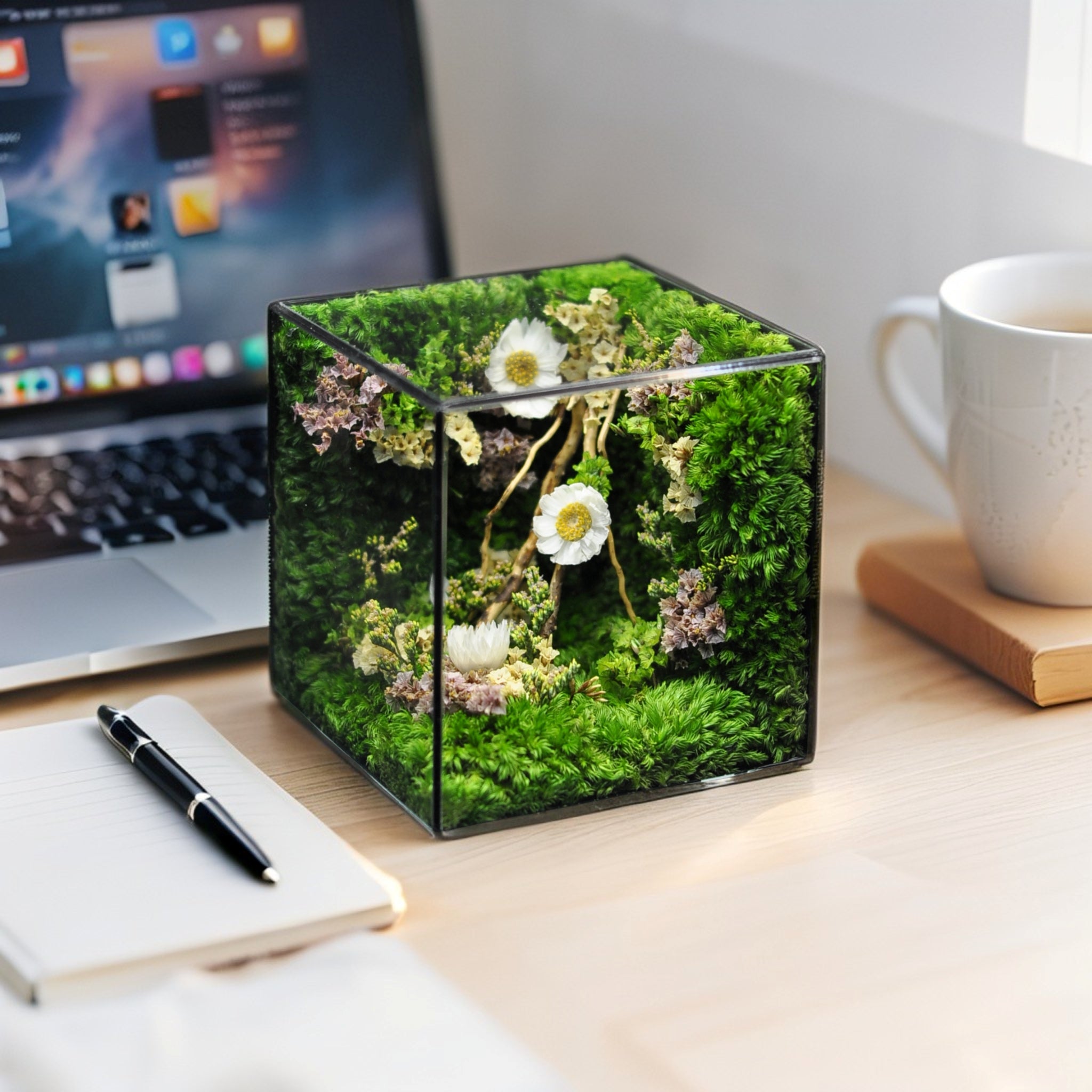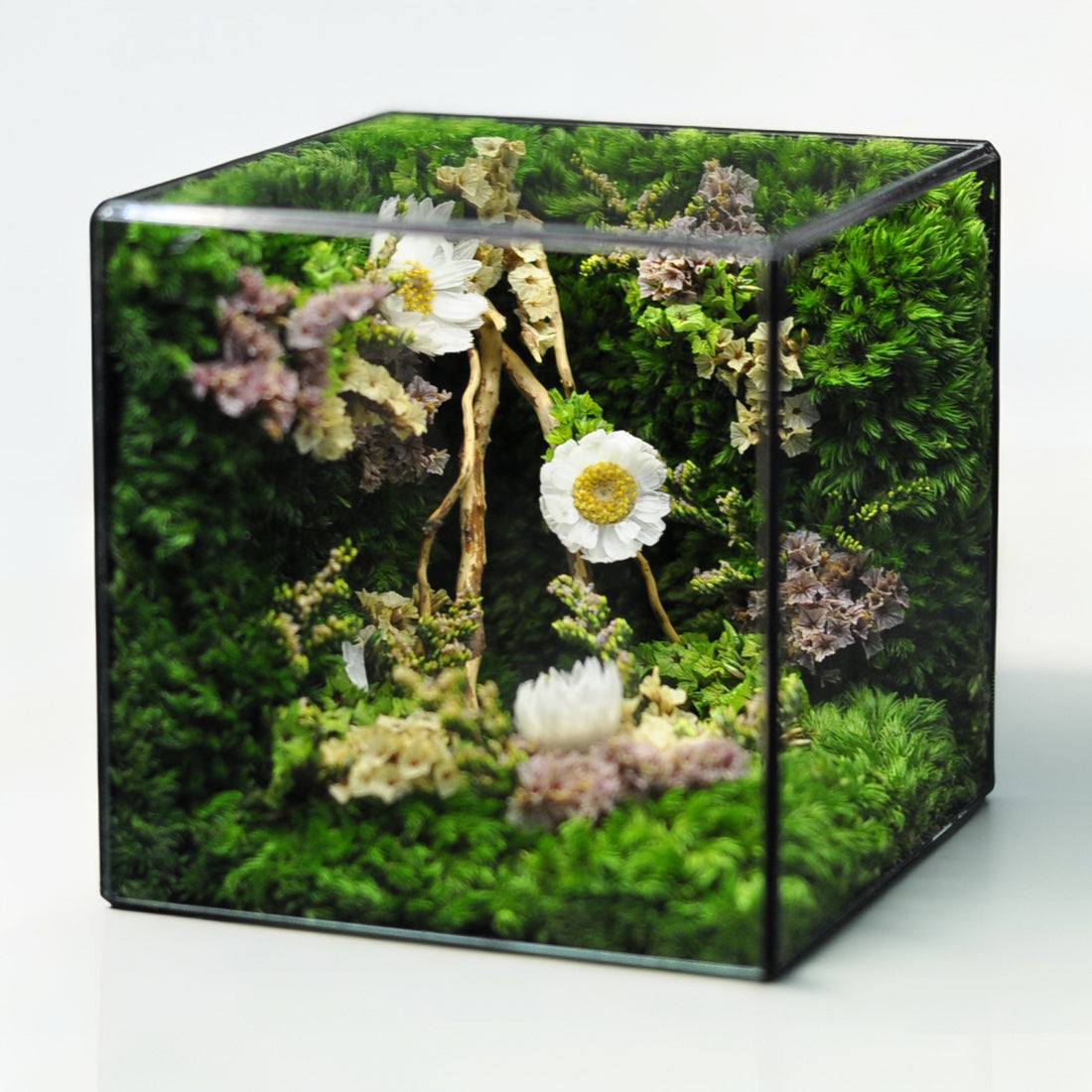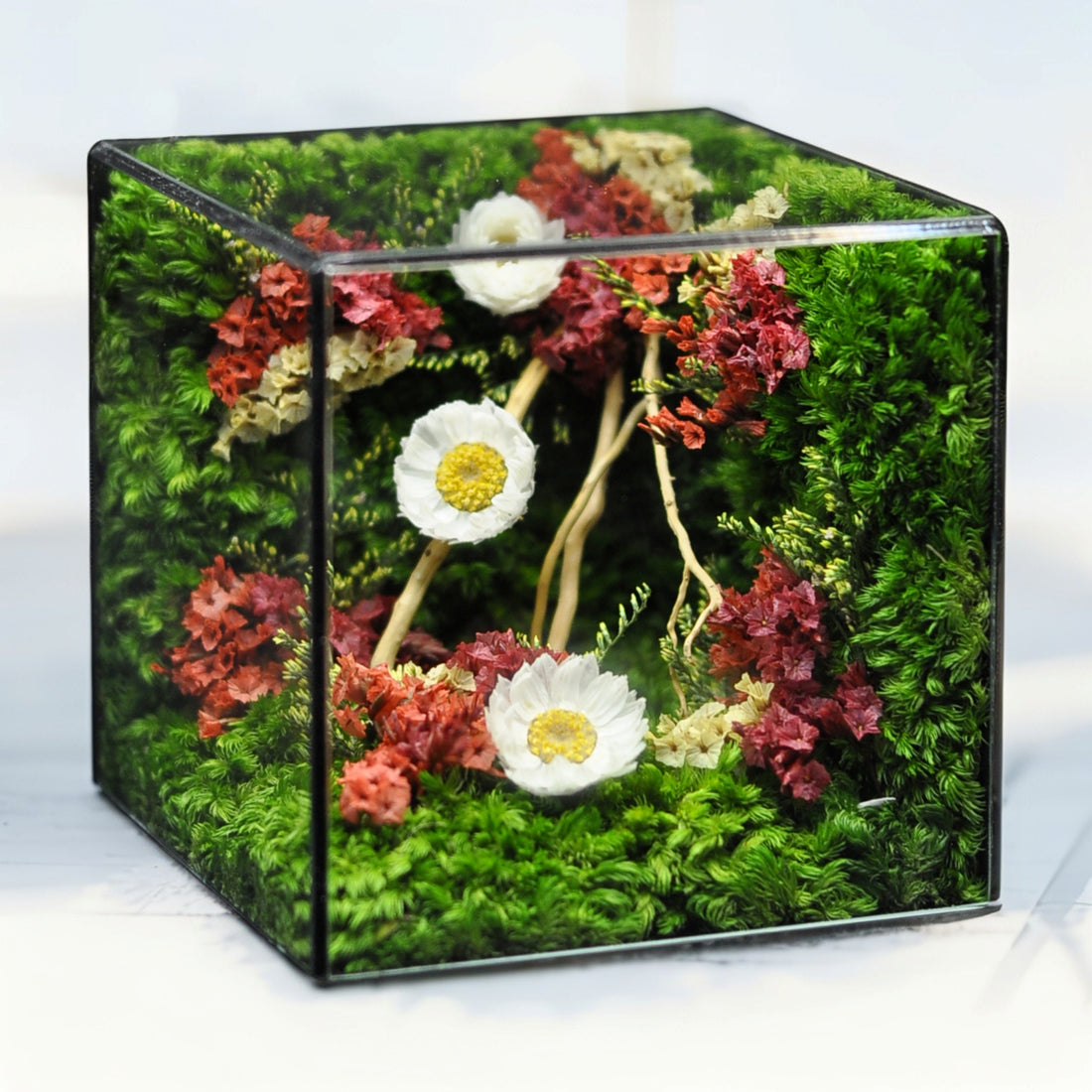Key Takeaways
Terrariums blend botanical elegance with self-contained ecosystems, offering a living decor solution that suits both beginners and experienced gardeners. Below are the key takeaways on what a terrarium is, how it works, essential care practices, and innovative styling ideas to integrate these miniature gardens into your home.
- Clarify the terrarium’s roots and definition: Stemming from Latin terra (earth) and -arium (container), a terrarium is a glass vessel—open or sealed—that houses soil, plants, and often microfauna to emulate a miniature ecosystem.
- Differentiate open vs closed terrarium models: Open terrariums permit air exchange for succulents and cacti, while closed terrariums trap humidity for moisture-loving species, creating a near-self-sustaining water cycle.
- Harness self-sustaining ecosystem principles: By layering drainage pebbles, activated charcoal, substrate, and plants, terrariums recycle condensation and nutrients, minimizing watering and maintenance.
- Apply essential care and maintenance guidelines: Position terrariums in bright, indirect light, monitor soil moisture, prune overgrowth, and occasionally ventilate closed units to prevent mold and ensure plant health.
- Select plant varieties for terrarium success: Use slow-growing, humidity-tolerant plants like ferns, mosses, and peperomias in sealed terrariums, and drought-resilient succulents or air plants in open setups for balanced growth.
- Elevate interiors with strategic terrarium styling: Place terrariums on shelves, coffee tables, or hang them by windows; choose vessel shapes, plant palettes, and accent materials that complement your decor theme for a cohesive look.
With these foundational insights, you’re equipped to explore the detailed steps for building your own terrarium, refine your care routine, and discover advanced styling techniques that turn these living displays into standout decor elements.
Introduction
Imagine encapsulating a slice of nature within your home, where vibrant plants thrive in a self-sustaining environment. This is the magic of terrariums—a term derived from the Latin words for 'earth' and 'container,' representing a unique blend of art and biology that brings life indoors.
Understanding the meaning of terrarium goes beyond its definition; it reveals the potential for creating lush ecosystems in both closed and open forms. For anyone from budding gardeners to seasoned enthusiasts, terrariums offer an elegant, low-maintenance approach to decor that enlivens any space while educating us about ecological balance. This guide will delve into the essential aspects of terrarium care, including differences between types, key care tips, and creative styling ideas, empowering you to craft a miniature garden that reflects both beauty and sustainability.
Terrarium Meaning: Definition and Etymology
Understanding Terrarium Definition and Etymology
Imagine a lush jungle thriving in a glass jar on your desk—welcome to the world of terrariums! A terrarium is a transparent container, sealed or open, designed to cultivate and display small plants in a controlled environment. According to Merriam-Webster, the meaning of terrarium encompasses decorative and educational functions by replicating natural habitats on a miniature scale (https://www.merriam-webster.com/dictionary/terrarium). Understanding terrarium meaning helps you choose the right container and plants for your space.
What Does Terrarium Mean in Latin?
The term terrarium derives from New Latin terrārium—Latin terra (“earth”) + suffix -arium (“place for”). Literally, it means “place of earth.” The earliest recorded use appears in Hugh McAllister’s 1853 article “On the Cultivation of Terraria” in the Journal of Horticulture, where he described glass enclosures for studying plant evaporation and condensation (McAllister, 1853).
Types of Terrariums: Open vs Closed
Open Terrarium: Features, Ideal Plants, and Use Cases
- Features: Unobstructed air exchange, lower internal humidity.
- Ideal Plants: Succulents (Echeveria elegans), air plants (Tillandsia).
- Use Cases:
- Tabletop centerpieces for dining or coffee tables.
- Hands-on science projects for classrooms and kids’ workshops.
- Desk décor in well-ventilated home offices.
- Workshop Insight: In Green Thumb Collective workshops, beginners often compact soil too tightly—using a chopstick to aerate the mix prevents root rot.
Closed Terrarium: Features, Ideal Plants, and Use Cases
- Features: Sealed lid retains moisture, creating a humid microclimate.
- Ideal Plants: Ferns (button fern, maidenhair), Fittonia, mosses.
- Use Cases:
- Natural humidifiers in dry rooms or offices.
- Low-maintenance bathroom displays.
- Shelf vignettes in living rooms or bedrooms.
- Designer Case Study: Interior designer Jane Smith recommends grouping closed terrariums on floating shelves in industrial lofts to soften harsh lines and introduce biophilic elements.
What Is the Difference Between Open and Closed Terrariums?
- Moisture: Open terrariums lose water rapidly; closed terrariums recycle moisture via condensation (Schmitz et al., 2018).
- Ventilation: Open models prevent mold through airflow; closed models require periodic airing (RHS, 2021).
- Maintenance: Open systems need regular watering and humidity checks; closed systems need occasional pruning and venting.
- Plant Selection: Succulents thrive in open setups; tropical understory species flourish in closed environments.
Having chosen your model, let’s explore how terrariums operate like mini-ecosystems.
Functioning as Self-Sustaining Ecosystems
Principles of Ecosystem Balance: Layering Drainage, Charcoal, Substrate, and Plants
- Drainage Layer: 1–2 inches of gravel or pebbles prevents waterlogging.
- Activated Charcoal: Use horticultural-grade charcoal (2–5 mm grain size; ~0.5 in. layer per gallon) to adsorb toxins and odors.
- Sphagnum Moss Barrier: Thin layer to keep soil from entering drainage and to retain moisture.
- Potting Mix: 2–3 inches of premium, well-aerated soil supports roots and microbial life.
- Plants: Select species suited to humidity and root volume; plant gently to minimize disturbance.
Water Cycle and Nutrient Recycling in Terrariums
Ever wondered how a terrarium can water itself?
- Transpiration & Evaporation: Plants release water vapor; soil moisture evaporates.
- Condensation: Vapor condenses on glass walls.
- Precipitation: Droplets return to the substrate, sustaining plant growth (Schmitz et al., 2018).
Microbial communities decompose organic matter, releasing nutrients; charcoal filters impurities to prevent stagnation.
How to Build a Terrarium: Step-by-Step Guide
How to Build a Terrarium Step by Step
Materials & Tools
- Glass container (open top)
- Gravel or pebbles (1–2 in.)
- Horticultural-grade activated charcoal (2–5 mm)
- Sphagnum moss
- Premium potting mix
- Succulents or air plants
- Tools: long tweezers, funnel, chopstick, spray bottle, gloves, mini hygrometer
Steps
- Clean and dry the container thoroughly.
- Add a 1–2 in. gravel layer for drainage.
- Sprinkle a 0.5 in. layer of activated charcoal.
- Cover with a thin sphagnum moss barrier.
- Add 2–3 in. of potting mix; fluff soil with a chopstick to avoid compaction.
- Arrange plants, avoiding oversizing to prevent overcrowding.
- Lightly mist and place a mini hygrometer near the edge to monitor humidity.
- Position in bright, indirect light.
How to Make a Closed Terrarium Step by Step
Materials & Tools
- Sealable glass container
- Gravel, activated charcoal, sphagnum moss, potting mix
- Moisture-loving plants, long tweezers
- Spray bottle, gloves, mini hygrometer
Steps
- Sterilize container with diluted bleach; rinse thoroughly.
- Layer gravel (1–2 in.), charcoal (¼–½ in.), and sphagnum moss.
- Add 2–3 in. of moisture-retentive potting mix.
- Plant ferns, mosses, and Fittonia using tweezers.
- Mist until substrate is just moist—avoid waterlogging.
- Seal and place in bright, indirect light; condensation should form within 24 hours.
- Use the hygrometer to maintain humidity at 70–90%; ventilate for 10–15 minutes if fogging is excessive.
Essential Care and Maintenance Guidelines
Light Requirements: Bright, Indirect Positioning
Provide bright, indirect light to prevent etiolation and overheating. East- or north-facing windows are ideal; supplement with full-spectrum LED grow lights if necessary.
Watering and Soil Moisture Monitoring
- Closed Terrariums: Rely on internal water cycling; add water sparingly when no condensation appears, typically every 4–6 months (RHS, 2021).
- Open Terrariums: Mist or bottom-water when topsoil feels dry.
- Use a mini hygrometer to maintain ideal humidity levels.
Ventilation, Pruning, and Mold Prevention
- Maintain ambient temperature between 65–75 °F (18–24 °C) (University of Minnesota Extension, 2020).
- Vent closed terrariums weekly for 10–15 minutes to exchange air and prevent mold.
- Trim overgrowth monthly and remove dead material.
- If mold or algae appear, increase ventilation and remove affected areas; treat pests with neem oil following UC Davis IPM guidelines to minimize ecosystem disruption.
Selecting Plants for Terrarium Success
Best Plants for a Terrarium: Humidity-Tolerant vs Drought-Resilient
Choose based on moisture needs and growth habit:
- Humidity-Tolerant: compact, slow growers with lush foliage.
- Drought-Resilient: water-storing leaves, minimal root disturbance.
Top Picks for Closed Terrariums: Ferns, Mosses, and Peperomias
- Button Fern (Pellaea rotundifolia): thrives at 70–80% humidity.
- Maidenhair Fern (Adiantum raddianum): delicate fronds, stable moisture required.
- Fittonia (Fittonia albivenis): vibrant veins, low-light tolerant.
- Moss species: carpet low-light areas, suppress algae.
Top Picks for Open Terrariums: Succulents and Air Plants
- Echeveria elegans: rosette form, low humidity needs.
- Haworthia attenuata: slow growth, bright light tolerant.
- Sedum morganianum (burro’s tail): trailing habit for tabletop displays.
- Tillandsia ionantha: soil-free air plant, versatile placement.
Styling Terrariums in Home Decor
Choosing Vessel Shapes, Materials, and Accent Elements
- Geometric glass with metal frames for modern interiors.
- Apothecary jars or rounded bowls for vintage or bohemian themes.
- Accent with colored sand layers, driftwood, or miniature figurines.
Integrating Terrariums into Living Spaces
- Floating shelves: create a living gallery wall.
- Coffee tables: serve as conversation-starting centerpieces.
- Hanging terrariums: add greenery at eye level in hallways or windows.
Plant Palettes and Decorative Techniques for Cohesion
- Monochromatic green schemes for minimalist décor.
- Variegated leaves with contrasting pebbles for focal interest.
- Coordinate accent materials (stones, sand) with existing room colors.
Troubleshooting and Expert Tips
Common Challenges and How to Overcome Them
- Mold or algae: increase airflow; remove affected substrate with a clean tool.
- Excess condensation: open lid briefly; reduce misting frequency.
- Pest infestations: isolate the terrarium; apply neem oil per UC Davis IPM guidelines.
Expert Tips for Long-Term Terrarium Health
- Dr. Elena Perez, Ph.D. in Plant Ecology: “Activated charcoal adsorbs volatile compounds, keeping your terrarium fresh.”
- James Liu, award-winning terrarium designer and author of Terrarium Creations (2020): “Always use distilled water to prevent mineral deposits on glass.”
- Install a mini hygrometer to track humidity and adjust care promptly.
Resources and Further Reading
Recommended Books, Websites, and Community Forums
- Books:
- The New Terrarium by Tovah Martin
- Terrarium Craft by Amy Bryant Aiello & Kate Bryant
- Websites:
- Merriam-Webster Definition: https://www.merriam-webster.com/dictionary/terrarium
- Schmitz et al., “Closed Terrarium Water Cycling and Microclimate Dynamics,” Journal of Plant Ecology, 2018.
- Community Forums:
- Reddit: r/terrariums
- Terrarium Enthusiasts Facebook Group: https://www.facebook.com/groups/terrariumenthusiasts
Glossary of Terrarium Terms
- Condensation: Vapor turning into liquid on container walls.
- Microclimate: Localized climate conditions within the terrarium.
- Transpiration: Process of plants releasing water vapor through leaves.
- Etiolation: Stretching of plant stems due to insufficient light.
- IPM (Integrated Pest Management): Ecological approach to pest control.
Conclusion
A terrarium serves not only as a beautiful decorative piece but also as a miniature ecosystem that illustrates complex principles of nature. By understanding the definitions, types, and maintenance requirements outlined in this article, enthusiasts can successfully cultivate vibrant plant displays tailored to their environments. Whether opting for an open terrarium to showcase hardy succulents or a closed version for humidity-loving ferns, each choice demands attention to detail in setup and care to thrive.
Recognizing the interplay of light, moisture, and ventilation can significantly enhance the longevity and health of your terrarium. As you embark on your own terrarium creation journey, consider how these small ecosystems can contribute to your living space, merging aesthetics with the serenity of nature indoors. With thoughtful planning and regular maintenance, terrariums not only beautify our surroundings but also deepen our connection to the natural world.
Frequently Asked Questions (FAQ)
Q: What does the term “terrarium” mean and what is its etymology?
A: A terrarium is a transparent container, sealed or open, designed to cultivate and display small plants in a controlled environment by replicating natural habitats on a miniature scale. The word comes from New Latin terrārium—Latin terra (“earth”) + suffix ‐arium (“place for”)—literally meaning “place of earth,” first recorded in 1853 by Hugh McAllister.
Q: What is the difference between open and closed terrariums?
A: Open terrariums allow unobstructed air exchange and have lower humidity, making them ideal for succulents and air plants; they require regular watering and airflow to prevent mold. Closed terrariums seal in moisture to create a humid microclimate suited to ferns, mosses, and Fittonia; they need only occasional pruning, periodic airing, and minimal added water.
Q: How do you build an open terrarium step by step?
A: 1) Clean and dry a glass container. 2) Add a 1–2 in. gravel drainage layer. 3) Sprinkle 0.5 in. activated charcoal. 4) Lay a thin sphagnum moss barrier. 5) Add 2–3 in. of potting mix, fluffing it with a chopstick. 6) Arrange succulents or air plants. 7) Lightly mist and place a mini hygrometer. 8) Position in bright, indirect light.
Q: Which plants are best suited for a terrarium?
A: Choose based on moisture needs:
- Humidity-tolerant for closed terrariums: button fern (Pellaea rotundifolia), maidenhair fern (Adiantum raddianum), Fittonia, and mosses.
- Drought-resilient for open terrariums: Echeveria elegans, Haworthia attenuata, Sedum morganianum, and air plants like Tillandsia ionantha.
Q: How does a terrarium function as a self-sustaining ecosystem?
A: Layers of gravel, charcoal, sphagnum moss, and potting mix support drainage, toxin adsorption, moisture retention, and root growth. Plants transpire and soil evaporates water vapor, which condenses on the glass and returns as droplets. Microbes decompose organic matter to release nutrients, while charcoal filters impurities.
Q: What light and watering conditions do terrariums require?
A: Terrariums need bright, indirect light—east- or north-facing windows or full-spectrum LED grow lights. Closed terrariums rely on internal water cycling; add water sparingly when condensation ceases, typically every 4–6 months. Open terrariums should be misted or bottom-watered when the topsoil feels dry. Use a mini hygrometer to monitor humidity.
Q: How can you prevent mold and pests in a terrarium?
A: Vent closed terrariums weekly for 10–15 minutes to exchange air. Trim overgrowth and remove dead material monthly. If mold or algae appear, increase airflow and remove affected areas with clean tools. For pests, isolate the terrarium and apply neem oil following UC Davis IPM guidelines.
Q: How can you style and display terrariums in home decor?
A: Select vessel shapes and materials to match your theme—geometric glass and metal for modern interiors or apothecary jars for vintage looks. Accent with colored sand, driftwood, or mini figurines. Display on floating shelves as a living gallery, on coffee tables as centerpieces, or hang in windows and hallways to introduce greenery at eye level.


